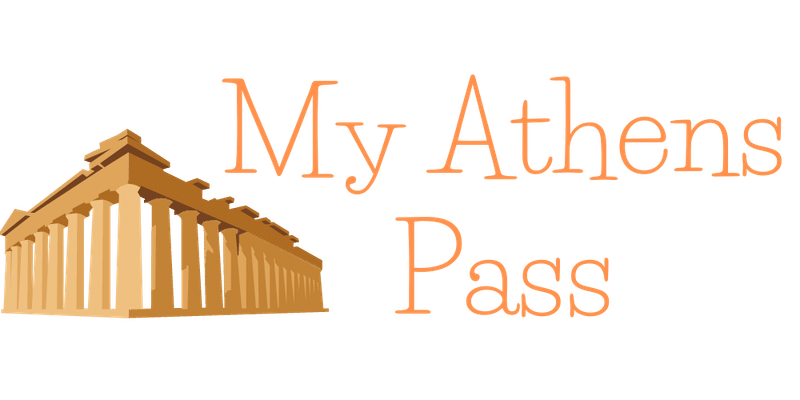Collections of Archaeological Museum Athens
The museum's sculpture collection includes marble and bronze sculptures from the Archaic, Classical, Hellenistic, and Roman periods, including some of the most famous sculptures from ancient Greece, such as the Statue of Athena Parthenos and the Antikythera Ephebe.
Book Now - Athens National Garden
The museum's pottery collection includes vases, plates, and other vessels from various periods, including the Geometric, Archaic, Classical, and Hellenistic periods. The pottery features intricate designs and provides insight into ancient Greek mythology and daily life.
Also Checkout - Ancient Agora of Athens
The museum's metalwork collection includes gold and silver jewelry, weapons, and tools from various periods, including the Bronze Age and the Hellenistic period.
The museum's frescoes collection includes colorful wall paintings from the Minoan civilization, which were preserved by volcanic ash after the eruption of Thera in 1628 BC.
The museum's coin collection includes ancient Greek and Roman coins, providing insight into the economic and political history of ancient Greece. The museum's collection also includes other artifacts such as figurines, mosaics, and inscriptions, providing visitors with a comprehensive view of ancient Greek culture and history.
History of Archaeological Museum Athens
- The Archaeological Museum in Athens was established in 1829, shortly after Greece gained independence from the Ottoman Empire.
- The museum was initially housed in the University of Athens until 1858 when it moved to its current location on Patission Street.
- Over the years, the museum's collection grew significantly through excavations and acquisitions, making it one of the most important archaeological museums in the world.
- During World War II, the museum was closed to the public and its exhibits were packed and hidden for safekeeping.
- In the years following the war, the museum underwent extensive renovations and expansions, including the addition of a new wing in 2004.
- Today, the museum's collection boasts over 11,000 exhibits, covering a period of over 5,000 years of Greek history.
- The museum continues to actively acquire new exhibits through excavations and donations, ensuring that its collection remains relevant and continues to grow.
- The museum plays a vital role in preserving and exhibiting Greece's cultural heritage and remains a popular destination for visitors from around the world.
Tips for Visitors
Know Before You Go to Archaeological Museum Athens
How To Reach -
Metro: The museum is located near the Victoria metro station, which is served by the Athens Metro Line 1 (green line).
Bus: The museum is also easily accessible by bus, with several bus lines stopping near the museum, including lines 024, 035, 054, and 224.
Taxi: Taxis are widely available in Athens and can take visitors directly to the museum.
Walking: The museum is located within walking distance of several major attractions in Athens, including Omonia Square and the National Archaeological Museum.
Car: If you are driving, there is a parking lot near the museum, but finding a parking spot can be difficult due to the high traffic in the area.
Best Time To Visit -
Off-season: The winter months (November to March) are the least crowded, and you can have a more relaxed visit. However, note that the museum is closed on certain holidays.
Shoulder season: The shoulder season (April to June and September to October) is a great time to visit the museum, with pleasant weather and fewer crowds compared to peak season.
Peak season: July and August are the peak tourist months in Athens, and the museum can get crowded during this time. If you plan to visit during this time, it is recommended to go early in the day to avoid crowds and the heat.
Holidays and weekends: The museum can be particularly crowded on weekends and national holidays. If you can, try to plan your visit for a weekday.
Faq's for Archaeological Museum Athens
What are the opening hours of the Archaeological Museum in Athens?
The Archaeological Museum in Athens is open from 8:00 am to 8:00 pm, seven days a week. It is closed on some public holidays.
What is the admission fee for the Archaeological Museum in Athens?
The admission fee for the Archaeological Museum in Athens is €10 per person, with reduced fees available for students and senior citizens. Children under the age of 18 can enter for free.
Do Checkout: Temple of Olympian Zeus Tickets
Is photography allowed inside the museum?
Photography is allowed inside the museum, but the use of flash and tripods is not permitted. Selfie sticks are also prohibited.
Are guided tours available?
Yes, guided tours of the museum are available in English, Greek, and other languages. Private tours and audio guides are also available.
Is there a cloakroom or locker facility at the museum?
Yes, there is a cloakroom facility at the museum where visitors can store their coats and bags. Locker facilities are also available for a fee.
Do Checkout: Temple of Zeus
Is the museum wheelchair accessible?
Yes, the museum is wheelchair accessible, with ramps and elevators available. Wheelchairs are also available for loan at the museum.
Are there any restrictions on visiting the museum due to COVID-19?
Due to the COVID-19 pandemic, visitors to the museum are required to wear masks, practice social distancing, and follow other safety protocols. The number of visitors inside the museum may be limited, and some areas may be closed off. It is recommended to check the museum's website for up-to-date information before visiting.

